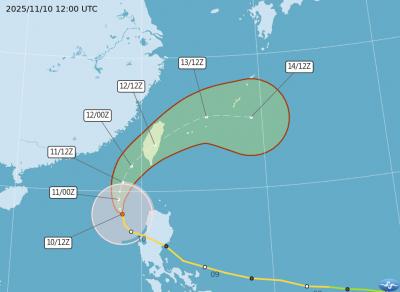New advances by China on its J-20 stealth fighter diminishes deterrence across the Taiwan Strait, a leading weapons expert in the US said.
“It is crucial that Washington begins to consider Taiwan’s next-generation requirements for air defense,” International Assessment and Strategy Center (IASC) senior fellow Rick Fisher said.
Over the past week, images of the new J-20 — with the number 2101 painted below the cockpit — have been shown for the first time on Chinese military Web pages, indicating that it might go into production sooner than expected.
According to the magazine Popular Science, the fighter could be moving away from prototype production and China could be quickly building planes for military use.
Initial operational capability could be achieved in about two years, the magazine said.
“Given over a decade’s worth of global technology advances, intensive investment and competent program management, it should come as no surprise that China will be the second nation in the world to start production of stealth fighters,” it said.
“The J-20 will give the People’s Liberation Army Air Force a technological advantage over every other Asian air force. While the J-20 may not be able to supercruise [fly at supersonic speeds without using fuel-thirsty afterburners] with its current Russian AL-31 turbofan engines, its high level of strength, long range and electronic warfare capabilities will make it a very formidable foe for other fighters,” it said.
Fisher told the Taipei Times that the status of the J-20’s engine was critical to determining the plane’s superiority to Taiwan’s modified F-16 planes and how soon the J-20 would be competitive with the US’ top-of-the-line fifth-generation Lockheed F-22A.
He said that Washington should now consider a fifth-generation fighter for Taiwan or the provision of advanced engine and electronics technology to allow the nation to produce its own next-generation fighters.
University of California professor Peter Navarro, a China expert, said in an article for the Huffington Post that the F-22 was arguably “the most potent fighter jet on the planet.”
However, he said that China’s new J-20 — “built with designs stolen from the Pentagon” — could gain the upper hand in a new Taiwan Strait crisis if there were more of the planes.
“China is moving forward at breakneck speed,” Navarro said.
Navarro said that when the next US president takes office in January 2017, the “critical strategic” decision to sell Taiwan advanced fighters would be waiting on their desk.
“Absent large numbers of F-35s and F-22s in the area flown by American and or Taiwanese pilots, Beijing is likely to quickly establish air dominance and overwhelm the island should it wish to make its final push,” Navarro said.
This came as Cato Institute researcher Eric Gomez said in an essay that a US$1.5 billion arms sale to Taiwan by Washington would not significantly change the balance of power between Taiwan and China.
“The modest size of the sale is a signal to Taiwan to get serious about self-defense,” he said.

The Central Weather Administration (CWA) today issued a sea warning for Typhoon Fung-wong effective from 5:30pm, while local governments canceled school and work for tomorrow. A land warning is expected to be issued tomorrow morning before it is expected to make landfall on Wednesday, the agency said. Taoyuan, and well as Yilan, Hualien and Penghu counties canceled work and school for tomorrow, as well as mountainous district of Taipei and New Taipei City. For updated information on closures, please visit the Directorate-General of Personnel Administration Web site. As of 5pm today, Fung-wong was about 490km south-southwest of Oluanpi (鵝鑾鼻), Taiwan's southernmost point.

Tropical Storm Fung-Wong would likely strengthen into a typhoon later today as it continues moving westward across the Pacific before heading in Taiwan’s direction next week, the Central Weather Administration (CWA) said. As of 8am, Fung-Wong was about 2,190km east-southeast of Cape Oluanpi (鵝鑾鼻), Taiwan’s southernmost point, moving westward at 25kph and possibly accelerating to 31kph, CWA data showed. The tropical storm is currently over waters east of the Philippines and still far from Taiwan, CWA forecaster Tseng Chao-cheng (曾昭誠) said, adding that it could likely strengthen into a typhoon later in the day. It is forecast to reach the South China Sea

Almost a quarter of volunteer soldiers who signed up from 2021 to last year have sought early discharge, the Legislative Yuan’s Budget Center said in a report. The report said that 12,884 of 52,674 people who volunteered in the period had sought an early exit from the military, returning NT$895.96 million (US$28.86 million) to the government. In 2021, there was a 105.34 percent rise in the volunteer recruitment rate, but the number has steadily declined since then, missing recruitment targets, the Chinese-language United Daily News said, citing the report. In 2021, only 521 volunteers dropped out of the military, the report said, citing

Nearly 5 million people have signed up to receive the government’s NT$10,000 (US$322) universal cash handout since registration opened on Wednesday last week, with deposits expected to begin tomorrow, the Ministry of Finance said yesterday. After a staggered sign-up last week — based on the final digit of the applicant’s national ID or Alien Resident Certificate number — online registration is open to all eligible Taiwanese nationals, foreign permanent residents and spouses of Taiwanese nationals. Banks are expected to start issuing deposits from 6pm today, the ministry said. Those who completed registration by yesterday are expected to receive their NT$10,000 tomorrow, National Treasury